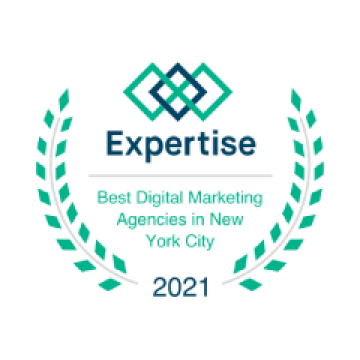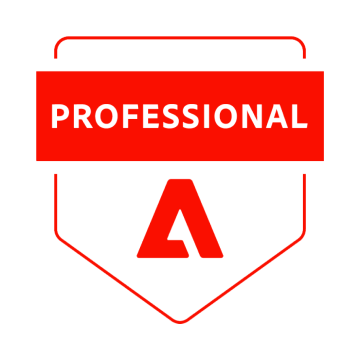Manufacturing Web Design
Building an effective manufacturing website starts with understanding how buyers evaluate suppliers, compare capabilities, and make procurement decisions. Most teams need more than a digital brochure. They need a site that communicates technical expertise, product depth, and operational capacity while guiding prospects toward RFQs and scheduled conversations. A focused approach to web design helps organize complex product catalogs, present certifications and equipment details clearly, and support the way engineers and purchasing teams research solutions.

Our Offerings
Website Planning & Information Architecture
Manufacturing organizations often have extensive product families, technical variations, and documentation libraries. We help translate this complexity into a logical structure that mirrors real purchasing behavior. This includes defining content hierarchies, grouping product lines in meaningful ways, and mapping navigation around buyer intent. The goal is to help engineers, buyers, and procurement teams locate specifications, materials, and certifications in as few steps as possible.
UX/UI Design for Technical & Industrial Buyers
Designing for manufacturing requires balancing branding with functional clarity. We create interfaces that guide users to the information they need to make decisions: materials, dimensions, tolerances, pricing guidelines, lead times, and application details. Our approach focuses on visual hierarchy, consistent component styling, and accessibility, so key content is easy to read and interact with on desktop or mobile.
Product Catalog & Data Management
Many manufacturing companies rely on complex spreadsheets and ERP exports to manage product information. We help structure this data for the web, standardizing attributes, documentation, and media. Product pages are built to accommodate technical specs, CAD files, certifications, and demo materials. When needed, we connect catalogs to PLM, ERP, or PIM systems to keep information consistent across internal and customer-facing tools.
Conversion-Focused Website Development
Websites in manufacturing often support long sales cycles. We build forms, RFQ pathways, and segment-based CTAs to help prospects reach sales teams at the right stage. This involves developing page templates for product families, applications, and industries served, along with backend logic for routing inquiries to the right departments. Clean code, fast loading speed, and modular structures keep the site easy to scale as your business grows.
Technical Content Integration
Manufacturing decision-makers look for proof: performance data, certifications, physical properties, and use-case examples. We help integrate technical documentation into your site in ways that make it easy to consume. This includes application notes, case studies, whitepapers, equipment details, and downloadable resources. The focus is on presenting technical depth without overwhelming users.
Website Maintenance & Feature Enhancements
Websites evolve as operations, equipment, or product lines change. We support continuous improvements—adding new product categories, updating documentation, refining navigation, integrating new tools, or improving inquiry flows. This helps keep the website aligned with your business goals and sales processes over time.
How We Bring Value To Your Business
A manufacturing website should deliver clarity, shorten evaluation cycles, and make it easier for qualified buyers to take action. Our work focuses on strengthening the digital interactions that shape how partners, distributors, and enterprise customers assess your capabilities.
1
Improve Buyer Navigation and Discovery
Procurement teams and engineers often arrive with a specific need: material specs, performance data, or production capacity. We organize content so these details are easy to access without digging through layers of pages. This helps visitors determine fit quickly and reduces the time your sales team spends on early qualification.
2
Support Technical Decision-Making
Buyers want confidence that your equipment, processes, and certifications align with their requirements. We design product and capability pages that show the information most relevant to evaluation—attributes, tolerances, materials, and application details. Clear content presentation helps move conversations forward faster.
3
Strengthen Lead Capture and RFQ Processes
Manufacturing purchases rarely happen through a shopping cart. The priority is guiding visitors toward structured conversations. We build RFQ forms, contact paths, and departmental routing to support real sales workflows. This creates a smoother path from initial interest to a qualified discussion.
4
Communicate Capabilities With Precision
A manufacturing website must accurately present processes, equipment, and operational scale. We collaborate with your team to develop messaging that supports credibility and eliminates uncertainty. This helps potential partners understand what you can produce, at what volumes, and for which use cases.
5
Reduce Internal Maintenance Effort
Manufacturers often update product lines, specs, or inventories. We create content systems that make these updates simpler, reducing dependency on development teams. This keeps product and capability pages current without slowing down internal operations.
6
Build a Foundation for Continuous Growth
Websites should evolve alongside equipment, certifications, and expanding operations. We implement modular structures that support adding new product categories, applications, and knowledge resources over time. This creates a stable base for future growth without rebuilding core systems.
Challenges We Commonly Solve
Manufacturing companies face unique website challenges—large product catalogs, complex specs, and long sales cycles. We focus on solving issues that limit usability, data accuracy, and buyer engagement.
Turn your manufacturing website into a high-performing sales asset.
Why Choose WiserBrand
Selecting a partner for manufacturing web design often comes down to experience with complex product data, clarity of communication, and the ability to support long buying cycles. We focus on building websites that align with real operational needs rather than chasing trends.
1
Deep Experience Working With Complex Data
Many agencies can design a visually appealing website, but few are familiar with organizing multi-level product lines, technical specifications, certifications, and documentation. We’ve worked with manufacturing and industrial businesses to translate complex data into structured catalogs and navigable interfaces. This helps buyers quickly understand what you produce and how it applies to their needs.
2
Collaboration That Respects Your Process
Manufacturing teams rely on established workflows and internal knowledge. We work closely with your engineering, marketing, and sales departments to capture accurate information and present it in a digestible way. This collaborative approach keeps the project moving while preserving organizational expertise.
3
Flexibility and Long-Term Partnership
A manufacturing website cannot be static. Product lines change, new equipment arrives, and new industries are added. We stay available for refinements—whether adding new categories, adjusting RFQ paths, or integrating new internal systems. Our role is to remain a dependable partner as your business evolves.
Cooperation Models
Different organizations operate at different stages of digital maturity. We offer flexible ways to collaborate, so manufacturing teams can move forward without disrupting internal workflows.
This model covers strategy, UX/UI design, development, testing, and launch. It works well for teams seeking a complete rebuild or transitioning from legacy systems. We handle site architecture, catalog structure, product data organization, and RFQ pathways, while working closely with stakeholders to reflect current operational capabilities.
Some manufacturers have a functioning site but need help addressing specific gaps—navigation, product data, performance issues, or outdated branding. We can focus on these areas without rebuilding the system from scratch. This approach helps organizations advance quickly and cost-effectively while prioritizing the components that impact sales and customer experience most.
For long-term needs, we provide continued updates to product lines, integrations, documentation, and technical assets. This model suits companies that prefer steady improvements over major redevelopment. We track functional requirements over time, making the website a living extension of operations.
Our Experts Team Up With Major Players
Partnering with forward-thinking companies, we deliver digital solutions that empower businesses to reach new heights.
Our Approach
Web design for manufacturing companies works best when it follows a structured path. Our approach focuses on understanding technical capacity, organizing product data, and building a website that supports real buying behavior.
Discovery & Requirement Mapping
We begin by learning how your business operates: product categories, production capabilities, engineering requirements, industries served, and internal expectations. We speak with sales and technical teams to understand how buyers evaluate your offering and what information signals fit. This gives us a clear foundation for navigation, messaging, and product data structures.
Information Architecture & UX Planning
Next, we translate product and capability data into an organized structure. This includes planning navigation, product hierarchies, and user journeys to reflect real procurement workflows. We define how product details, documentation, certifications, and RFQ paths should be presented so visitors can evaluate compatibility without unnecessary steps.
Interface & Content Design
With a clear structure in place, we move to UX/UI design. The focus is clarity: readable specs, intuitive layouts, and simple interactions. We collaborate with your team to shape technical content, highlight equipment capabilities, and represent branding consistently. The result is an interface that supports evaluation rather than distracting from it.
Development & Data Integration
We build the site using reliable frameworks and modular components. This step often includes structuring product data, building RFQ forms, and connecting to ERP, PIM, or CRM systems when needed. Our goal is to create a dependable environment that supports long-term updates, catalog changes, and growth without major disruption.
Launch, Review & Continuous Improvement
After deployment, we review performance, user behavior, and inquiry patterns. Some teams need help refining content, adding new product lines, or improving conversion paths. We remain available for refinements and new feature development so the website keeps pace with operational changes.
Case Studies
Our case studies highlight the outcomes we’ve delivered and the approaches that made them possible.
Manufacturing Web Design FAQ
Manufacturing websites must organize complex product data, specifications, certifications, and RFQ flows. The goal is to help technical buyers quickly confirm compatibility and begin conversations with sales teams.
Yes. We structure catalog data so it’s easy to navigate, filter, and update. When needed, we connect websites to ERP, PIM, or CRM systems to keep product information consistent.
We build forms that capture relevant details such as volumes, materials, and application requirements. Submissions can be routed to specific teams or locations based on buyer inputs.
We collaborate with internal teams to organize specs, equipment details, CAD files, certifications, and resource libraries, making them simple to access without overwhelming users.
We work with WordPress, Shopify, Magento, and custom frameworks. If needed, we evaluate which approach best supports your catalog size, integration needs, and long-term upkeep.























